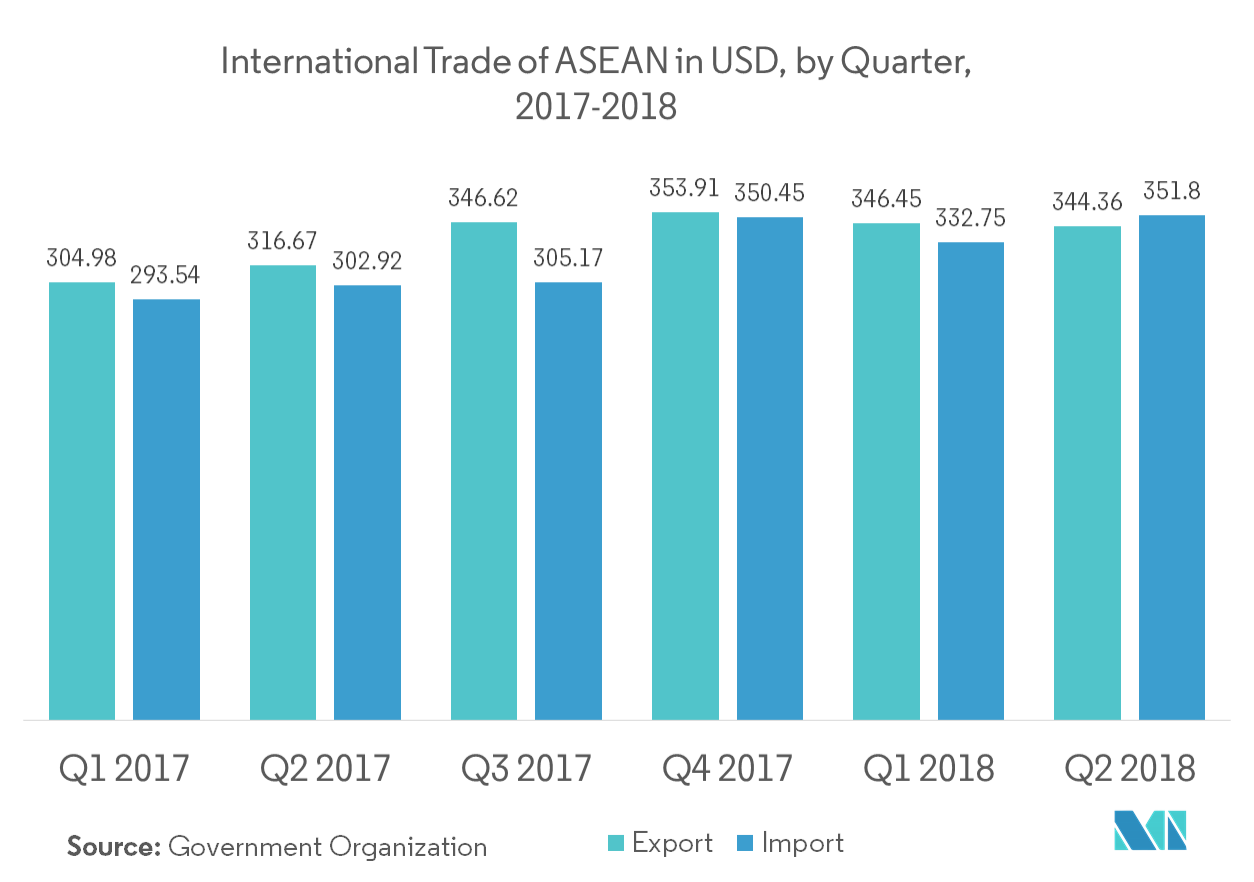Market Trends of Asean Freight Forwarding Industry
This section covers the major market trends shaping the ASEAN Freight Forwarding Market according to our research experts:
Sea Freight Forwarding to Achieve Significant Growth over the Forecast Period
The geographical profile of the region indicates that the maritime trade is vital to achieve an effective supply chain network, and it brings significant opportunities for the growth of the region. Shipping is a vital factor in the region’s transportation system, especially in Indonesia and Philippines.
The ports in Singapore and Malaysia are capable of handling large vessels with comparatively better infrastructure. The port quality in Thailand is also good, while the port quality in Indonesia, Philippines, and Vietnam is relatively lower.
The region is an important hub for cargo flow; for example, the Strait of Malacca accounts for more than one-fourth of the global trade. Given the prominent location of the region and the ongoing major upgrades of port infrastructure, the sea freight forwarding market is expected to witness steady growth over the forecast period.
The emerging new technologies, such as port automation, artificial intelligence, Internet of Things, and blockchain, are expected to boost the sea freight forwarding market in future.

Growing Trade in the Region is Expected to Drive the Freight Forwarding Market
The international trade of the region is growing rapidly, driven by the increasing manufacturing activity. The manufacturing sector is the key sector in the emerging economies of ASEAN, and the governments of the region are continuously promoting the manufacturing activities through various initiatives, such as, Eastern Economic Corridor (EEC) in Thailand.
With the rising manufacturing costs in China, the country is moving away from labor-intensive industries. Additionally, moving up the value chain is leading the businesses to relocate their manufacturing facilities to Southeast Asia. Moreover, the Free Trade Agreements (FTAs) and Special Economic Zones (SEZs) fuel the growth of trade and manufacturing activities in the region.
A lot of economies in the region are majorly export driven. Additionally, the freight forwarding market is detrimental to the rising trade and supports the economic growth of the region.


